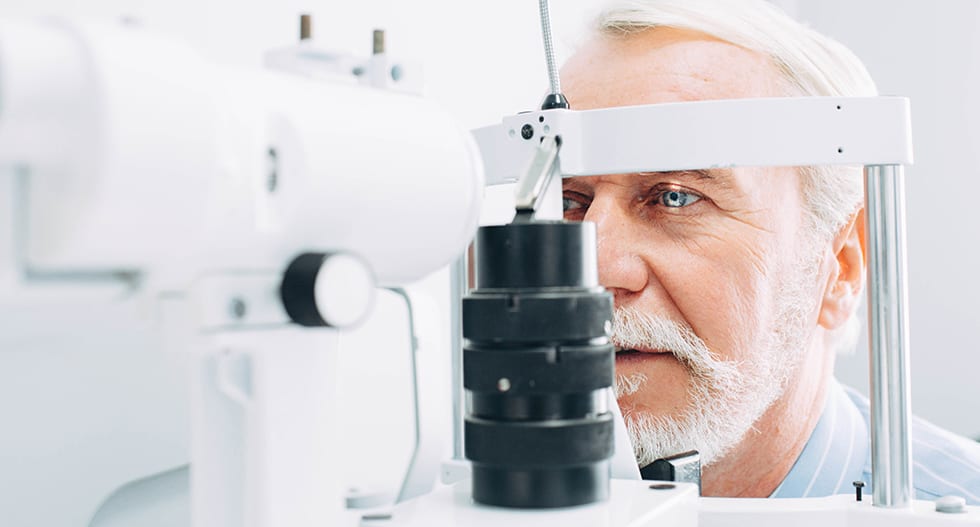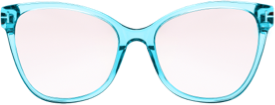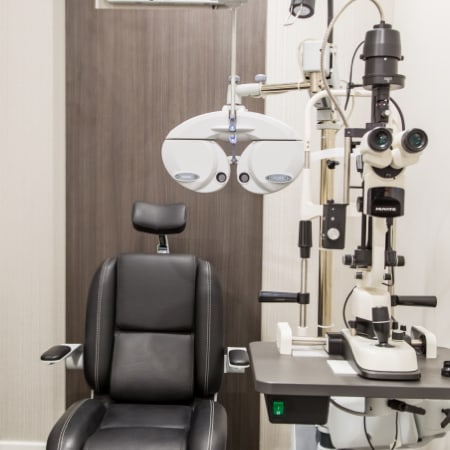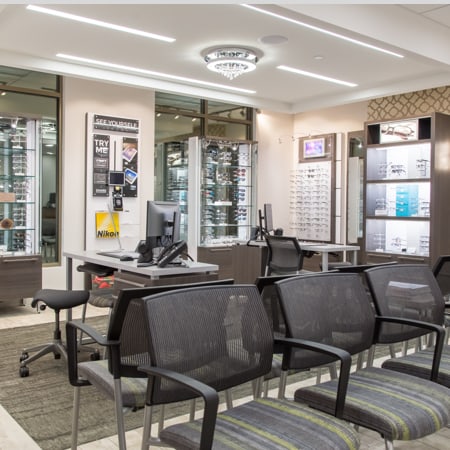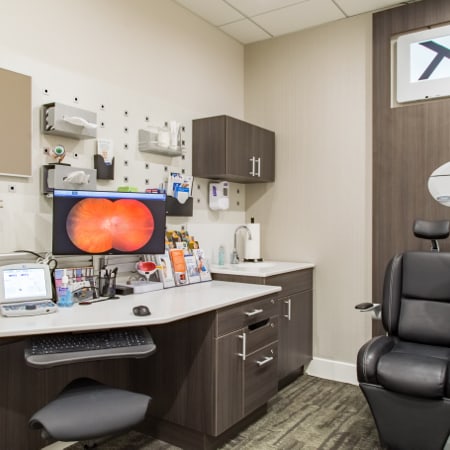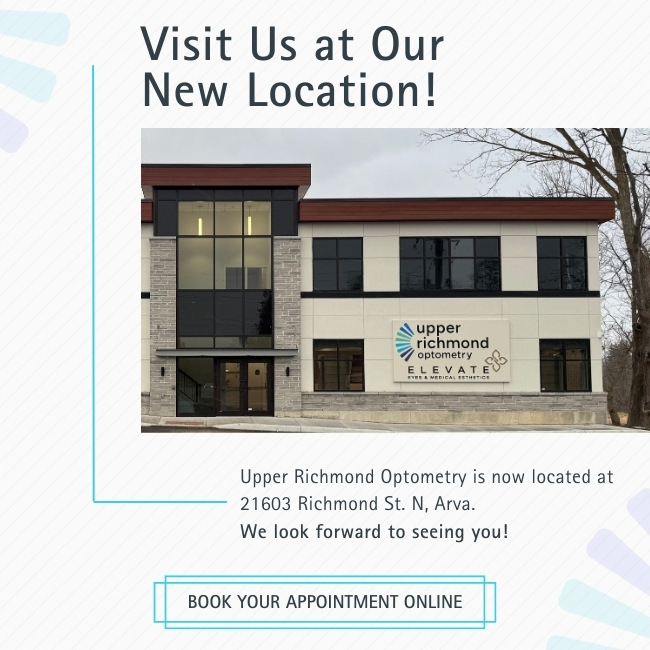Start with a Comprehensive Eye Exam
Eye diseases and conditions are just a part of life, and with proper treatment and management, they don’t have to impact your daily routine. At our practice, we encourage regular eye exams in order to stay on top of your vision health and help catch eye diseases or conditions early.
Our team is here to care for your eye health and can assist with a personalized treatment and maintenance plan. Book an exam today with our doctors and prioritize your ocular health.

Early Eye Disease Detection Is Key
The key to overcoming common eye conditions and diseases is early detection through a comprehensive eye exam. Even if you’re not experiencing symptoms of an eye condition, it’s still important to keep up with a regular exam schedule.
Regular eye exams can catch eye diseases, even when there are no symptoms present. When these conditions are diagnosed, early treatment can help to slow the progression.


Our Diagnostic Technology
In order to provide a thorough diagnostic process for our patients, we use modern technology and tests.
Optical coherence tomography angiography (OCTA) is an imaging system that provides a high-definition view of the blood vessels in the eye. This is a modern way to view the vascular structure without using the traditional dye method of angiography.
The OCTA uses 3D imaging to diagnose many eye diseases and conditions in the retina, like age-related macular degeneration (AMD) and diabetic retinopathy.
Tonometry is a test used to measure the pressure inside the eye. There are 2 main types of tonometry diagnostic tests: non-contact and Goldmann applanation.
- Non-contact tonometry, also known as the air puff test, is when air pressure is pushed into the eye and directed towards the cornea to measure the pressure in the eye.
- Goldmann applanation tonometry is the most common tonometry test and involves a flat-tipped probe that is placed against your eye.
Corneal topography is used to measure the curvature of the surface of the cornea. This is done by the patient placing their chin in the device and focusing on the light in front of the eye. The device captures the curvature of the eye, which is important not only to diagnose eye conditions but also for a contact lens fitting.
Axial length is determined by combining the length and thickness of the eye. This is an important measurement when treating myopia, as axial length out of the normal range can point to a myopia diagnosis.
Whether you’re looking to diagnose age-related macular degeneration (AMD) or monitor its progression, AdaptDx Pro is a simple and fully automated dark adaptometer that can make a significant impact on patient care.
AdaptDx Pro is a diagnostic tool that measures the speed of dark adaptation in your eyes. With modern eye tracking technology, it provides accurate measurements of your dark adaptation function. The AdaptDx Pro test determines the number of minutes it takes for your vision to adjust to darkness, giving valuable insights into your overall eye health.
Macular pigment density testing is a diagnostic method for assessing the health of your eyes. With this technology, we can now actively monitor and protect the vital macular pigment in your eyes. By measuring the density of this pigment, our team can accurately assess your risk for vision loss and develop personalized treatment plans.
Neurolens is designed to alleviate painful symptoms experienced by 80% of patients with eye misalignment. These innovative glasses feature contoured prism lenses, providing treatment for headaches, neck/shoulder pain, and eye strain.
Neurolens can offer relief from digital eye strain symptoms and improve visual clarity.
Common Eye Diseases & Conditions
Age-related macular degeneration (AMD) occurs when the macula of the eye deteriorates over time with age. The macula of the eye controls sharpness, so with AMD, vision can become blurry or wavy in the later stages. Treatment for AMD can range from supplements to injections and laser treatment.
Learn more about our AMD Centre for Excellence.
Cataracts are a condition in which the lens of the eye becomes cloudy with age. This is due to the proteins in the eye breaking down over time.
Symptoms of cataracts include blurry or foggy vision, double vision, halos in your vision, faded colour vision, sensitivity to light, and more. Treatment options for cataracts include an updated prescription and a routine surgical procedure.
Glaucoma is caused by increased pressure in the eye, damaging the optic nerve. This can often develop due to age or a family history of glaucoma.
Symptoms of glaucoma can include blurry vision, eye redness and pain, light sensitivity, halos around lights, headaches, and vision loss in serious cases. Treatment options for glaucoma include medication, surgery, or laser treatments.
Flashes and floaters are both seen in your field of vision but could point to an eye condition or disease. Flashes are flashes of light in the corner of your eye or around the perimeter. This can point to stress on your retina, like pressure or pulling. This could be a sign of a condition such as retinal detachment.
Floaters are small spots or squiggles in your field of vision. They are caused by protein getting caught in the jelly-like part of your inner eye, known as the vitreous.
Flashes and floaters may go away on their own, but see a doctor if they persist, as it could point to a serious condition.
Diabetic retinopathy occurs in those with diabetes when high blood sugar levels cause damage to the retina in the back of the eye. Symptoms of diabetic retinopathy include blurry vision, holes in vision, flashes or floaters, or loss of vision in serious cases.
Receiving a diabetic eye exam can help to diagnose diabetic retinopathy before it progresses.
Conjunctivitis, also known as pink eye, is a condition where the conjunctiva swells due to infection. The conjunctiva is the thin membrane on the inner part of the eye and can get infected due to a virus or bacteria, allergies, or chemical reactions.
Symptoms of conjunctivitis can include pink or red eyes, a gritty feeling, watery eyes, discharge in the eye, itchiness, and excessive tears. Depending on the type, conjunctivitis can be treated using topical steroids, antibiotics, or antihistamines.
Uveitis is inflammation in your eye due to an infection. This infection targets the uvea of the eye, which is the middle layer of the eye between the sclera and the retina.
Symptoms can include blurry vision, floaters, pain, redness, and sensitivity to light. Treatment options can include antibiotics, eye drops, injections, or steroid implants.
Dry eye occurs when the eye does not produce enough good quality tears to properly moisten the surface of the eye. Symptoms of dry eye include redness, burning, grittiness, a scratchy feeling, or a feeling like there is something in your eye you can’t get out.
Treatment options for dry eye include lubricated drops, ointments, sprays, and gels, as well as many in-office treatments.
Learn more about dry eye therapy.
Epiretinal membranes are thin layers of tissue that form on the inside of the retina. This is most common in those 50 and over. Symptoms are generally mild but include central vision loss, blurred vision, double vision, wavy vision, and trouble reading.
The main treatment option for epiretinal membranes is surgery, but only about 15% of cases require this.
Keratoconus occurs when the cornea of the eye becomes thin and bows outward. This can distort the corneal shape and blur vision. Treatments for keratoconus can include corrective lenses in mild cases and specialty contact lenses in most cases to adapt to the shape of the cornea.
Here For Your Vision Care
Our team is dedicated, experienced, and equipped to help you manage different forms of eye disease. Book your appointment online today and get a head start on managing the early signs of eye disease.
